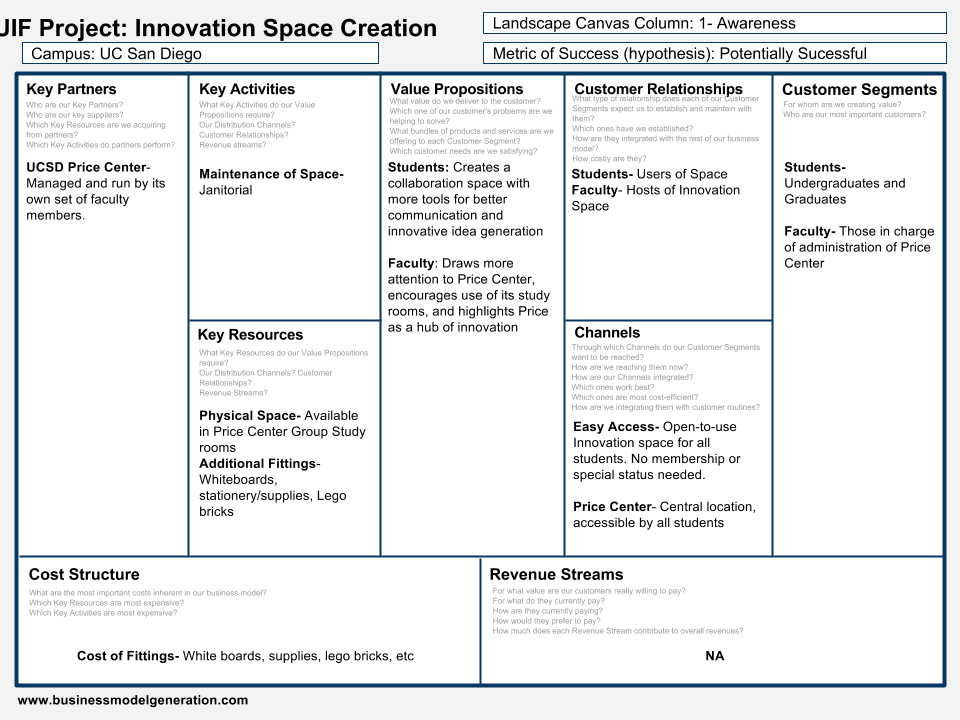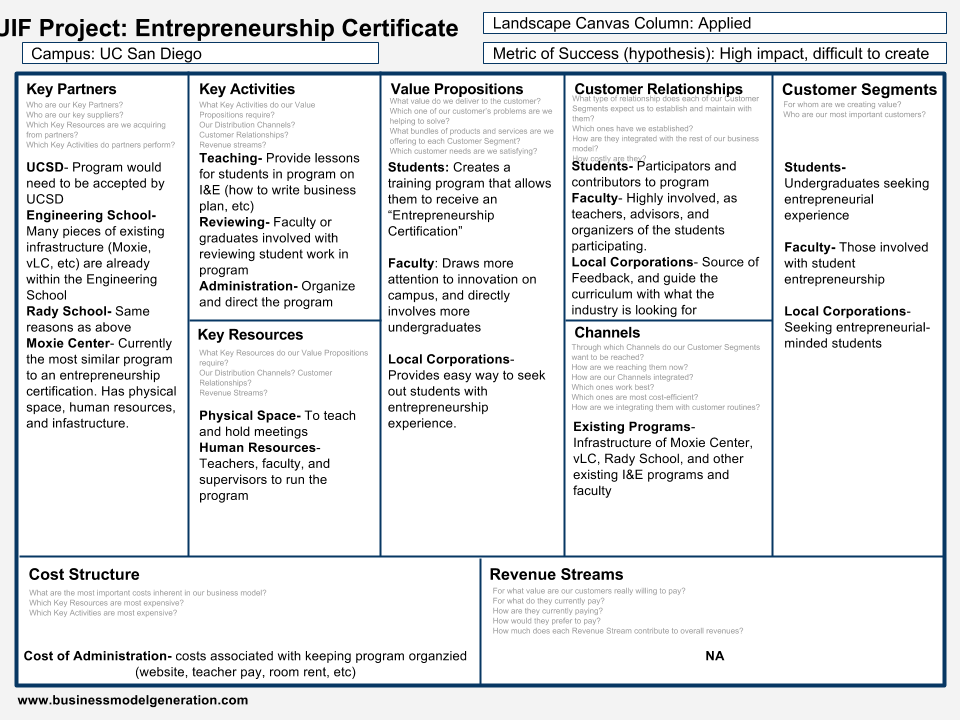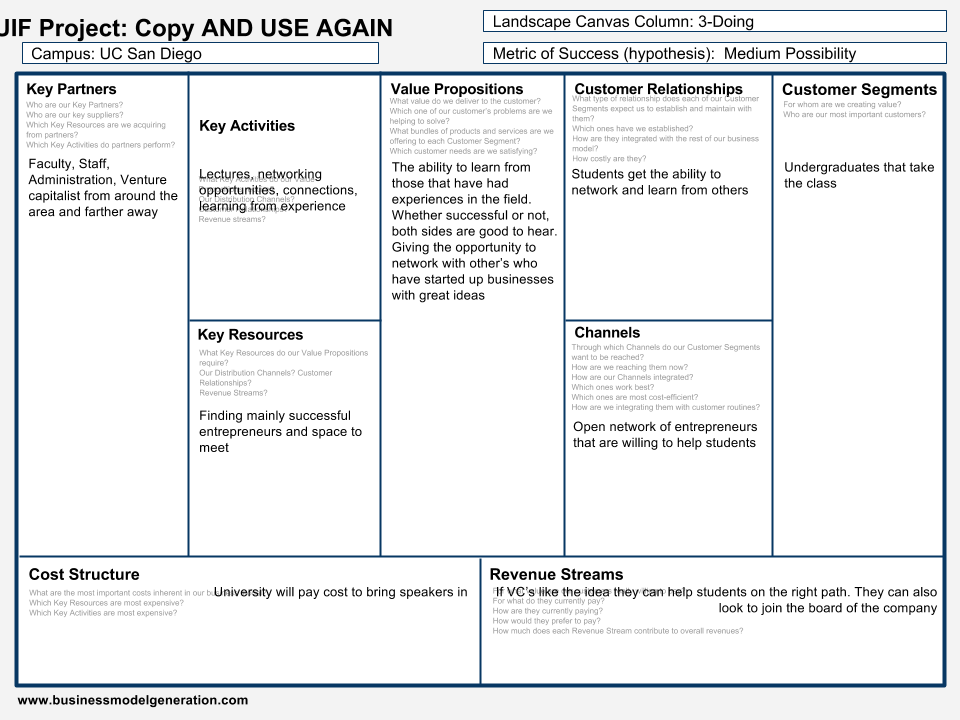Priorities:University of California San Diego Student Priorities
Contents
Overview
Strategy #1: Expanding Student Potential
Tactic 1- The Innovation Space
Improving the nature of on-campus locations can create a number of easy to access, spacious, well-outfitted innovation spaces-- open for use by all students to catalyze innovative thinking on campus. With a number of spaces on UCSD's campus, in Geisel, Price Center, College Centers, and in department buildings, having spaces that students can access is not a problem at UCSD. Despite the number of study spaces, very few spaces actually exist that are dedicated to creativity and innovation, and those that are often require special permissions or program participation to access. Having open-access spaces that all students can access, dedicated to innovation, adds significantly to the I&E culture of the campus.
With such a large number of pre-existing spaces, all outfitted with chairs, a table, and whiteboard (generally), several improvements can be included additionally to convert some of these study spaces into innovation spaces. Tools and supplies that encourage collaborative communication can be added to any room, like larger whiteboards, sticky notes, scratch paper, and markers. More supplies can invite creativity, like a tub of Lego bricks, AUTOCAD on computers, or proximity to a useable toolspace or workshop.
Strategy #2: Offering More Applications
Tactic 1- Entrepreneurship Certification
UCSD's campus has a thriving innovation culture, with multiple programs and resources available for student teams that are building their start up companies. However, these programs are only useful for students that already have a team, a product, and a company, and are ready to get involved with real-world entrepreneurship. The Entrepreneurship Certification program would be an educational course, perhaps a quarter long, or several weeks long, in which students get together, learn the basics of entrepreneurship (lean start up, etc), and go through an extensive course that has them form teams, design a product idea, and develop a mock business plan. By going through the entire process, from team building to plan development, students can learn about the campus resources, the innovation process, and potentially end up with a real-world-ready entreprenurial plan. This course could be instructed by leading I&E figures at UCSD, like Neil Senturia, Barbara Bry, Jay Kunin, or Rosibel Ochoa, all faculty members that already are heavily involved with campus innovation. This program allows individual students, without a team or product idea, to come into a space where more like-minded students can learn together, and serves as a streamlined orientation on exactly how to innovate, as well as a program that boosts their resumes (giving students even more incentives to enter the program). Local companies also benefit from the program, as they then have a simple certification that they can seek out that lets them know that a student has entrepreneurial experience, with some of the biggest names in I&E on UCSD's campus.
Strategy #3: Entrepreneuriship Elective
Tactic 1- Entrepreneurship option
UCSD has the opportunity to make a huge difference with thinkers and innovators around campus. This can start with the school of engineering! Allowing seniors the option to take an elective that is a little out of the box, yet extremely relevant to life later down on the road would be very beneficial. The elective being a class where local entrepreneures come to the school to teach an accredited class about making a startup as well as the life that revolves around just that. It gives the option for many students to learn from experienced individuals, but also gives the flexibility in course work so that students do not have to change their academic classes too much to try and pursue such a career.
Related Links
University of California, San Diego
Campus Innovation Fellows:
Neil Gandhi


